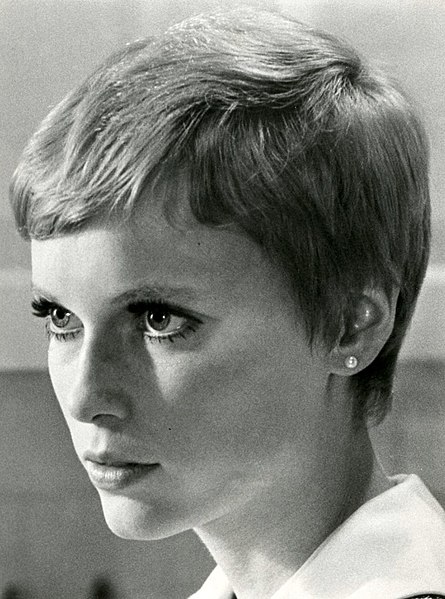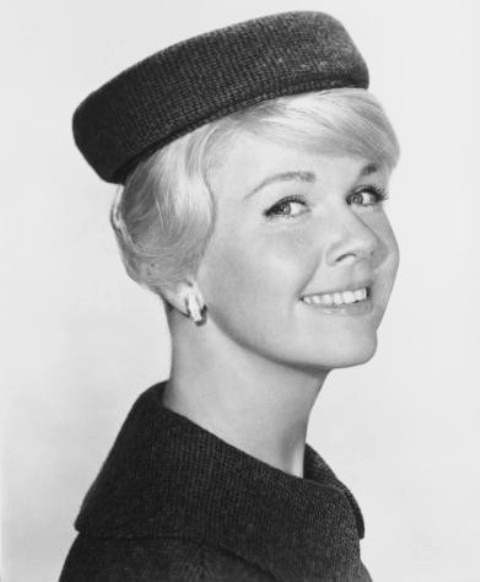The Peter Pan collar, characterized by its small size and rounded edges, became an emblem of 1960s fashion. Initially emerging in the earlier decades as a subtle detail on children’s clothing and women’s blouses, the collar transcended its delicate beginnings to become a staple of mod fashion. It was commonly seen on mini-dresses and blouses, serving as a symbol of youthful exuberance and innocence in a time of bold style statements and cultural shifts.
During the 1960s, the Peter Pan collar shed its exclusive association with formal attire and childhood garments, broadening its appeal. It was no longer just an adornment for ‘high fashion’ but instead became accessible to the masses, frequently appearing in everyday wear and even on stage outfits of popular music groups like The Supremes. The simplicity of the collar’s design, juxtaposed with the vibrant and geometric patterns of the era’s clothing, underscored the decade’s fashion revolution wherein practicality met playfulness.
The integration of the Peter Pan collar into various garments, from the iconic A-line dresses to casual blouses, reflected the decade’s evolving attitudes towards fashion and self-expression. This era of experimentation and liberation in dress allowed the Peter Pan collar to flourish and left an indelible mark on fashion history, one that designers and vintage enthusiasts continue to appreciate and revisit in modern times.
Historical Significance

The Peter Pan collar, recognizable for its flat and rounded shape, experienced a resurgence in popularity during the 1960s. This period marked the collar’s transition from high fashion to a mainstream wardrobe staple.
Emergence in the 1960s
In the 1960s, the Peter Pan collar shifted from exclusive fashion circles to broader public adoption. Accessible to the wider populace, these collars appeared on straight and colorful mini-dresses, encapsulating the era’s spirit of youth and freedom. Synonymous with the trendsetting aesthetic, Peter Pan collars were embellished on various garments, symbolizing the playful and rebellious tone of the decade.
Influence of Public Figures
Public figures and fashion icons contributed significantly to the collar’s popularity. Originating from Maude Adams’ portrayal of the titular character in J.M. Barrie’s “Peter Pan”, for which the collar is named, its adoption by celebrities and style influencers of the ’60s cemented its iconic status. Further historical connections include the influence of the French novel “Claudine à l’école” by Colette, which featured the “le col Claudine,” enhancing the collar’s chic, youthful allure.

The collar’s impact was not limited to theater and literature; it graced the high-fashion scenes of France, echoing the refinement of Victorian and Edwardian era children’s wear, such as the popular style seen in John White Alexander’s painting of “Little Lord Fauntleroy”. Its presence on the 1960s fashion scene reiterated its timeless appeal, welcomed by a generation ready to embrace the past while making a sartorial statement that was undeniably contemporary.
Design and Aesthetics
The Peter Pan collar‘s distinctive shape and flexibility made it emblematic of fashion evolution, echoing the shifting trends from demure femininity to mod influences in the 1960s.
Characteristics of Peter Pan Collars
Peter Pan collars are known for their distinct, flat design with rounded corners, creating a clean and elegant line around the neckline. Typically, these collars are constructed in contrasting colors, often white, to stand out against a black or colored garment. Additionally, lace details were not uncommon, adding a touch of refined intricacy to the collar’s appearance.
Incorporation into 1960s Styles
During the 1960s, the Peter Pan collar integrated seamlessly with the era’s fashion trends. It adorned straight and colorful mini-dresses, capturing the spirit of the mod movement. These collars softened the boldness of geometric prints and vibrant colors, bringing a nostalgic vibe to cutting-edge sixties styles. Their simple yet pronounced design was key to forming the decade’s iconic silhouettes and signature looks.
Cultural Impact
In the 1960s, the Peter Pan collar made a significant mark on fashion, transcending mere adornment to become a symbol of the era’s rebellious youth and shifting cultural norms.
Iconic Appearances in Media
The Addams Family featured Wednesday Addams as a character who consistently wore dresses with Peter Pan collars, contributing to the style’s association with a kind of somber quirkiness. Mia Farrow in Rosemary’s Baby portrayed an innocent charm accentuated by her wardrobe’s use of Peter Pan collars. The show Mad Men later revived the collar’s image by dressing its characters in period-appropriate attire, reflecting the fashion of the era.

Sabrina Spellman from Sabrina the Teenage Witch, though later in pop culture, harkened back to the Peter Pan collar’s mystique, reinforcing its iconic status across different decades.
Adoption by Subcultures
The 1960s saw the Peter Pan collar adopted by a variety of subcultures. It was not just a high fashion item for the elite but became a staple for the mods and youth of the time.
- The Mod Movement: The mod subculture embraced the Peter Pan collar, adding to their sleek and streamlined aesthetic.
- Music Scene Influences:
- The Supremes: This Motown group occasionally wore outfits featuring Peter Pan collars, blending sophistication with youthfulness.
- Cher: Known for her distinctive style, Cher incorporated Peter Pan collars into her fashion, showcasing its versatility.
- Twiggy: As a fashion icon, Twiggy often sported Peter Pan collars, exemplifying the collar’s role in defining 1960s fashion.
The collar became a unisex trend, extending its cultural significance beyond traditional gender norms.
Modern Revivals
The resurgence of the Peter Pan collar in modern fashion showcases its timeless appeal and versatility. This classic collar shape has infiltrated contemporary designs, becoming a distinctive feature that oscillates between nostalgic and fashionably modern.
Contemporary Fashion Influences
Designers have reintegrated the Peter Pan collar into today’s fashion, often adding a modern twist to this retro element. The collar appears on a variety of garments, from blouses to dresses, manifesting in different materials like leather for an edgy look or traditional fabrics for a softer appeal. Fashion icon Alexa Chung has been seen championing this trend, reinforcing the collar’s status in the fashion world. Prints ranging from the playful to the sophisticated are being paired with Peter Pan collars, allowing them to span a spectrum of styles from whimsical to professional.
Popular Culture and Media
In popular culture and media, the Peter Pan collar has made a noteworthy comeback, with television shows and films set in or echoing the 1960s aesthetic. These appearances have aided in cementing the collar’s association with the era and its re-emergence as a sought-after detail in the fashion industry. Its ability to evoke a vintage charm while maintaining a fresh feel has made it a favored choice for outfits in various settings, including weddings, where it adds a touch of classical elegance to modern bridal styles.
Fashion Pieces and Combinations
The Peter Pan collar, synonymous with an air of youthful innocence, played a significant role in the wardrobe of the stylish ’60s woman. Its ability to transform simple garments into items of playful elegance was unparalleled in the decade.
Garments Featuring Peter Pan Collars
Blouses and shirts with Peter Pan collars became staple items in a ’60s woman’s closet. They often featured:
- Blouses: Typically made of light fabrics like cotton or silk, and paired with A-line skirts or high-waisted pants.
- Mod Dresses: Characterized by their straight cut, these dresses frequently incorporated contrasting white Peter Pan collars for a bold statement.
- Shift Dresses: Similar to mod dresses with simpler lines, showcasing Peter Pan collars in matching fabric for a seamless look.
- Wedding Dresses: Select designs included delicate, lace-adorned Peter Pan collars, providing a touch of modesty and whimsy.
Accessorizing with Peter Pan Collars
Accessorizing garments with Peter Pan collars involved carefully chosen items to complement their distinct shape:
- Pillbox Hats: These small, brimless hats were often worn with Peter Pan collar outfits, adding to the overall clean and elegant aesthetic of the ’60s fashion style.
-
Day in a publicity portrait for Midnight Lace (1960) - Textured stockings or patterned tights were popular choices with dresses featuring Peter Pan collars, echoing the playful yet sophisticated vibe of the ensemble.


